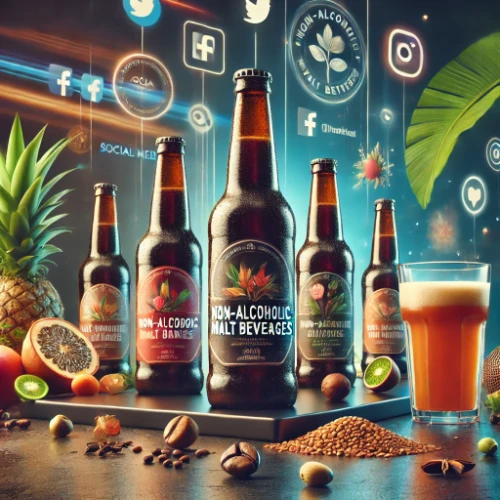Brewing malt beer has deep roots in German history, dating back centuries. Over time, this popular beverage has blended traditional brewing techniques with modern innovations. Let’s explore how it’s made, its historical significance, and why it remains popular today.
The Origins of a Classic Beverage
Malt beer started as a top-fermented drink using barley malt. The yeast would float to the top during fermentation, creating a rich, malty flavor. By combining light and dark barley malts, brewers developed the beer’s signature sweetness and caramel color. Historically, it was considered a full-bodied drink with a wort content between 11-15.9%, offering a satisfying and nourishing experience.
The Sweet Beer War: Tradition Meets Legal Battles
In the 1950s, German brewers faced a legal challenge known as the Sweet Beer War. Many added sugar to sweeten their malt beer, which clashed with the strict Bavarian Purity Law. The law limited beer ingredients to only malt, water, hops, and yeast. By 1958, the courts decided that beers with added sugar could no longer be classified as “beer.” These beverages were renamed malt drinks, while traditional brews adhered to the original recipe.
For more on the Bavarian Purity Law, visit wikipedia.org.
What’s the Difference Between Traditional and Sweetened Versions?
The key difference lies in the ingredients. Traditional malt beer is made with just malt, water, hops, and yeast, resulting in a rich flavor with an alcohol content of 1-2%. Malt drinks, by contrast, are sweeter. They include additional sweeteners like caramel syrup and typically contain less than 0.5% alcohol. Though these malt drinks can’t be called beer in Bavaria, they are a popular option for those looking for non-alcoholic alternatives.
A Look Into the Brewing Malt Beer Process
The brewing process for this beverage involves strict control over fermentation. Brewers use caramel malts and keep the temperature around 10°C to limit alcohol production, while still preserving the malty taste. In contrast, malt drinks are made by stopping fermentation early, chilling the wort, and adding sweeteners to retain sweetness without producing alcohol. Carbonation is then added to both drinks to create that refreshing fizz.
For more information on brewing processes, visit brewingscience.com.
A Nutritional Choice Through History
For much of the 20th century, malt beer was seen as a nutritious beverage. It was promoted for its vitamins and minerals, making it popular with athletes, new mothers, and those recovering from illness. Its natural sugars provided energy, and its B-vitamins supported overall health. Though sugary soft drinks reduced its popularity in the 1980s, this malt-based drink has maintained a dedicated following.
The Modern Appeal of This Classic Beverage
Recently, the beverage has made a comeback, particularly with health-conscious consumers. As people steer away from sugary sodas, malt-based beverages offer a low-alcohol alternative packed with vitamins and minerals. Regional breweries have played a major role in reviving this drink, highlighting its traditional production methods while appealing to modern tastes. Often seen in sports sponsorships, malt beer is now marketed as an ideal drink for active, health-conscious individuals.
Tradition and Modernity in Every Sip
Whether in its classic form or as a sweetened malt drink, this beverage has stood the test of time. Its rich history, versatile brewing techniques, and modern health appeal make it a favorite for a wide range of drinkers. As people continue to search for healthier options, this timeless drink will surely remain a top choice.
Suggested Related Links for Further Exploration
- Brewing Non-Alcoholic Malt Drinks: Tradition Meets Innovation
Dive deeper into the meticulous brewing process behind non-alcoholic malt beverages, blending history with modern techniques. - Non-Alcoholic Malt: A Historical Perspective
Explore the rich heritage of malt drinks and their evolution through the centuries. - Non-Alcoholic Malt: Healthy Beverages for Modern Consumers
Discover how malt beverages cater to today’s health-conscious lifestyles while preserving their traditional appeal. - Malt-Based Beverages and Their Role in Modern Diets
Understand how malt drinks fit into contemporary diets, balancing nutrition and taste. - The Chemistry of Non-Alcoholic Malt Flavor
Learn about the science behind the unique flavors of malt beverages and their sensory appeal.




